SUMMARY
This is AI generated summarization, which may have errors. For context, always refer to the full article.
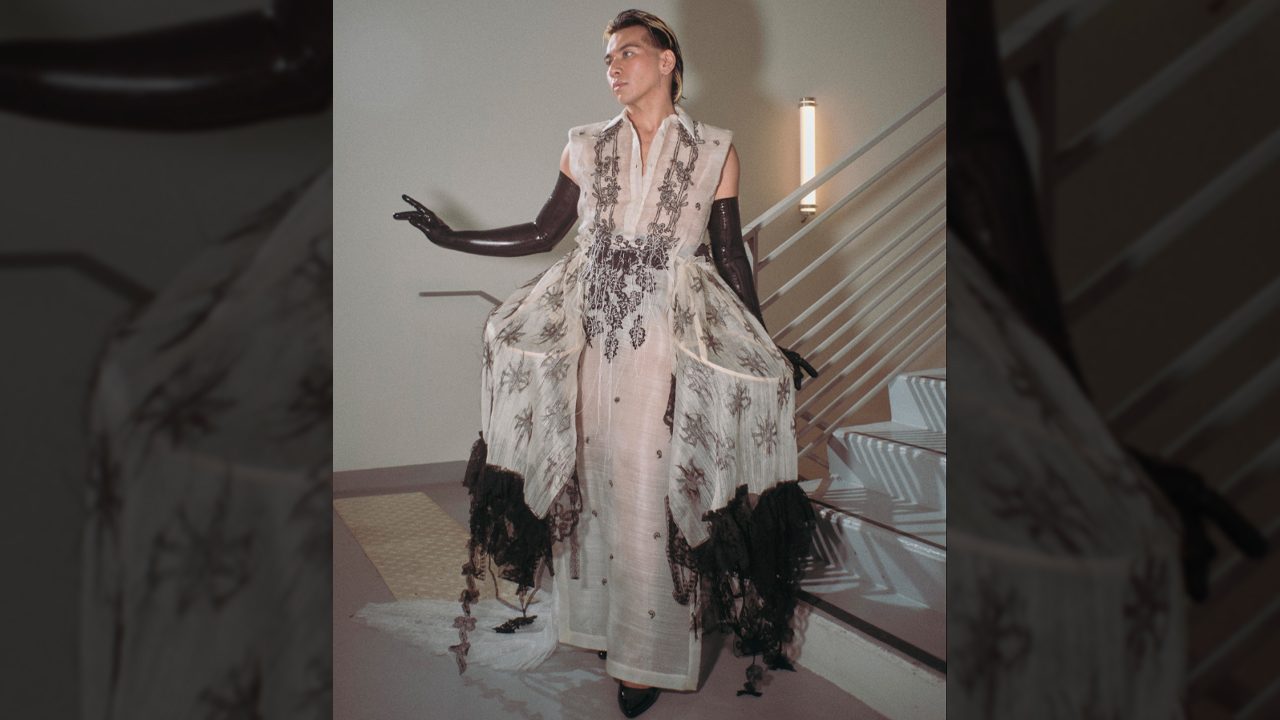
Looking at a Jude Macasinag couture creation can be a visceral experience, even if you’re only viewing it on a screen. First, the form and colors grab your attention. As you go for a closer look, you discover the meticulous handiwork and materials that you never imagined could be fashioned into clothing – we’re talking recycled glass bottles, human hair, and even the humble Sparrow kumot. And just like any great piece of art, it leaves you asking, How did he do that? What was he thinking when he made it?
Even if you haven’t heard of Macasinag’s name, you’ve probably seen one of his designs. Drag artist Marina Summers hailed him as “the future” in an Instagram post, and Fil-Am influencer Bretman Rock recently donned one of Macasinag’s works to receive honors at the Hawaiian House of Representatives. The 25-year-old designer has also dressed celebrities like Dolly de Leon, Nadine Lustre, and Pia Wurtzbach.
But Macasinag doesn’t just make pretty clothes. He weaves them with messages and laces them with a touch of nostalgia – it’s probably why you get the feels from looking at his work. For his master’s graduation show at the Institut Français de la Mode (IFM) Paris in February, the proudly queer designer staged a bold collection called “Haute Queer-ture.” With delightfully subversive names like “Marie Cuntoinette” and “Amanda Le Whore,” the pieces are rich with queer references and stories.
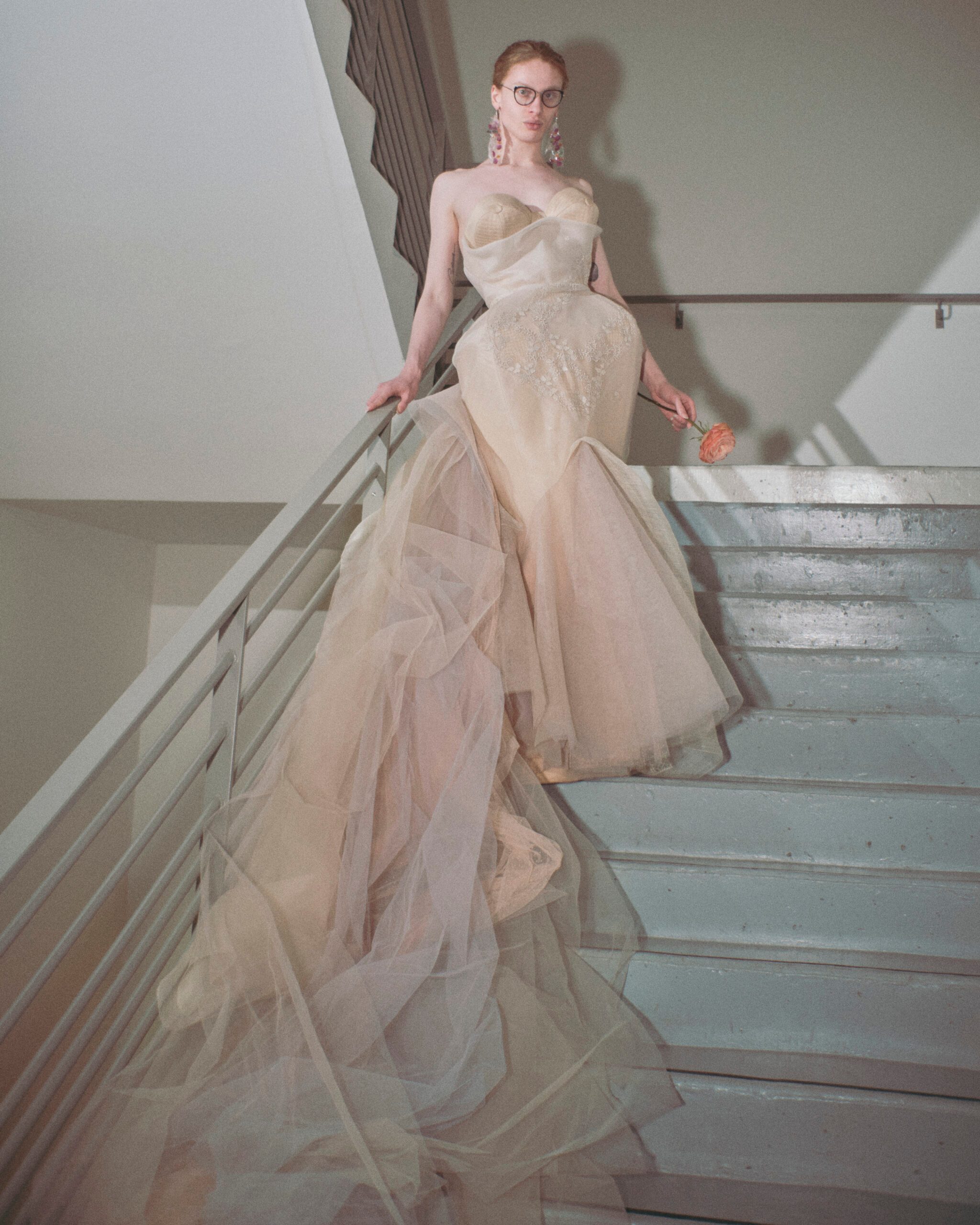
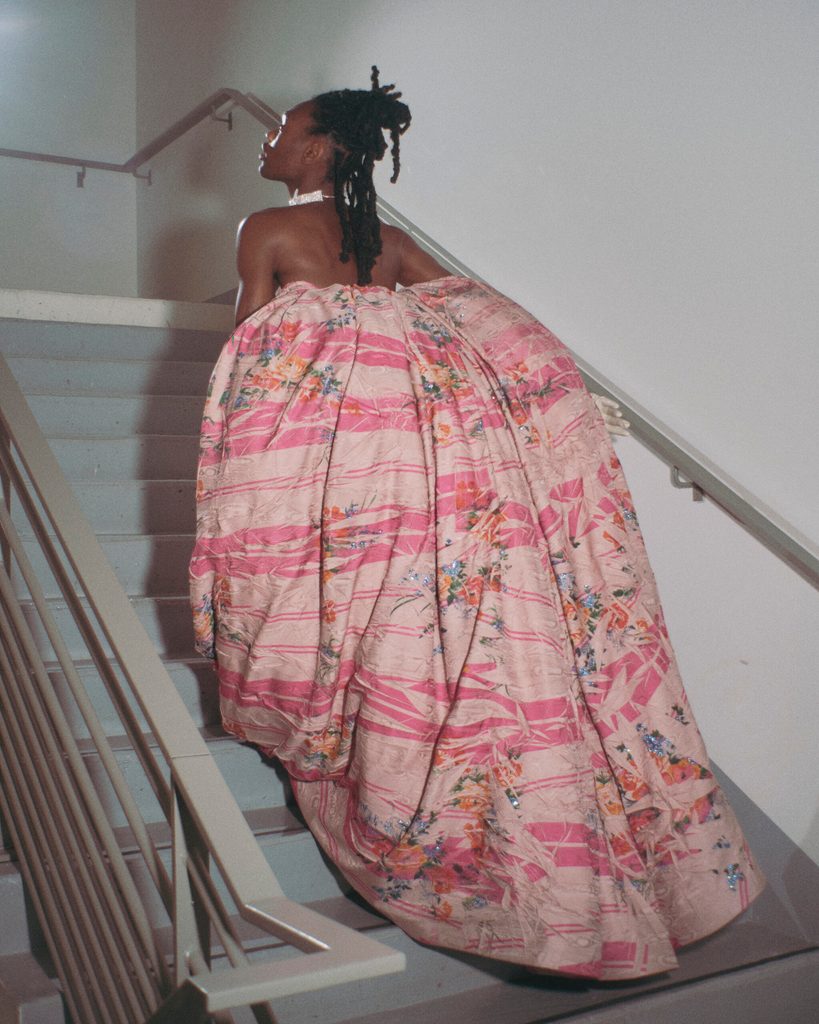
Rappler interviewed Macasinag about his collection, the intersection of queer culture and couture, and what it’s like to study fashion design in one of the world’s biggest fashion capitals.
Rappler: For those who aren’t familiar with your work, how would you describe the Jude Macasinag universe?
Macasinag: The Jude Macasinag universe first and foremost talks about personality. It adapts to characters and narratives that often come about from my upbringing or daily culture. My work has been categorized as theatrical, but the way that I see it is that it is an enhancement of how we live our day to day. My garments are also highly artisanal, often made following old haute couture craftsmanship. The value and humanity of clothing is emphasized through the workmanship of the hand.
Rappler: You just presented your master’s graduate collection called “Haute Queer-ture.” Can you elaborate on the concept and what you wanted to communicate through it?
Macasinag: Haute Queer-ture celebrates our queer identity and excellence through couture, the highest craft in fashion that involves as much passion, dedication, and skill as drag and ballroom. I first looked into artistic references close to home: from the barong which is the national men’s garment in the Philippines, to nostalgic iconography very familiar to our upbringing, to the photography of Ricardo Yan, a young queer photographer who I personally think captures the underground Manila club culture most vividly.
The general drag scene also influenced how I saw the silhouettes in relation to the body, often reshaping them. I then looked into my archive of vintage haute couture – a hyper-obsession of mine – to understand the often time-consuming technical construction of these garments that are representative of the ideals in garment-making.
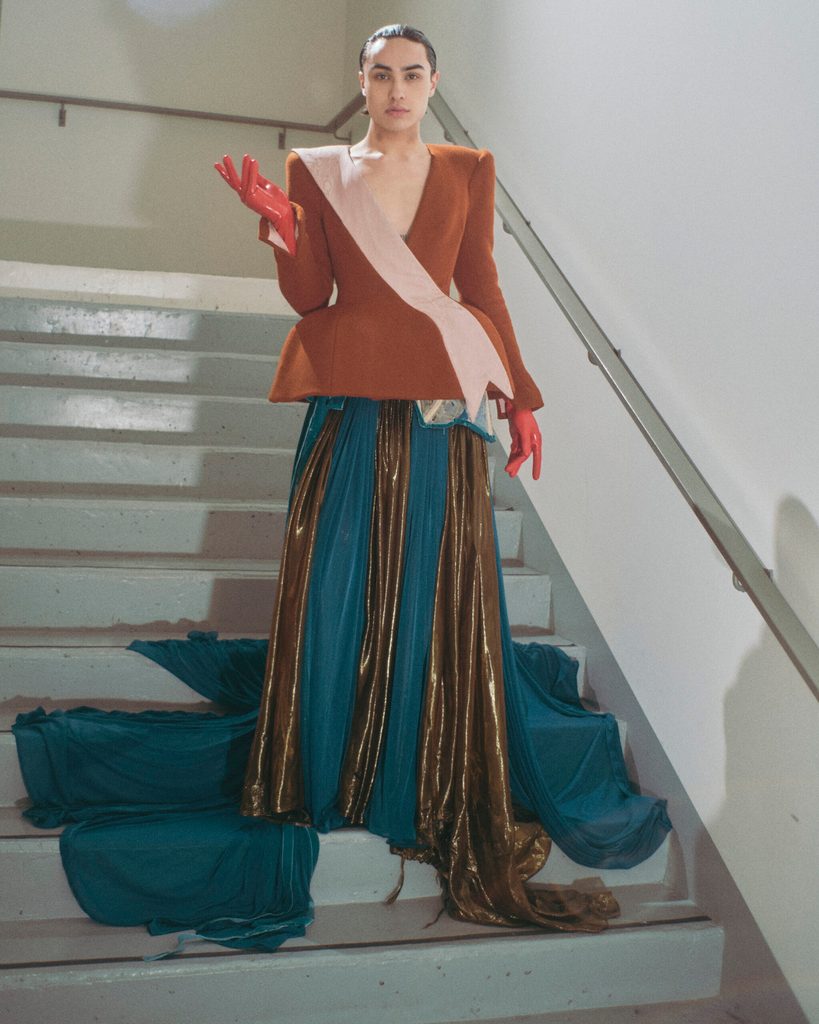
Rappler: Are there any elements or pieces in “Haute Queer-ture” that are especially meaningful to you or carry a deeper message about queer identity?
Macasinag: The usage of often cheap, “trash” materials in contrast with more refined fabrics and techniques came naturally to me. Dozens of beer bottles were cleaned, crushed, and then transformed into an opulent and abstract floral embroidery done by the Italian company Rilievi. Two textiles using pineapple fibers that I developed with Filipino artisans were used. The first is an intricate hand embroidery with human hair, and the second is a hand-loomed jacquard also with human hair. I also developed “fantasy denim,” which is a denim treated in several layers of various materials to the point of almost total reconfiguration.
For me, this handling of material with authentic age-old techniques, all done under the context of a personal queer identity, rejects the drab conformity imposed by society. In a sense, it is transgression made beautiful. It reshapes and reinforces the main condition for queerness: that it is done by us, for us.
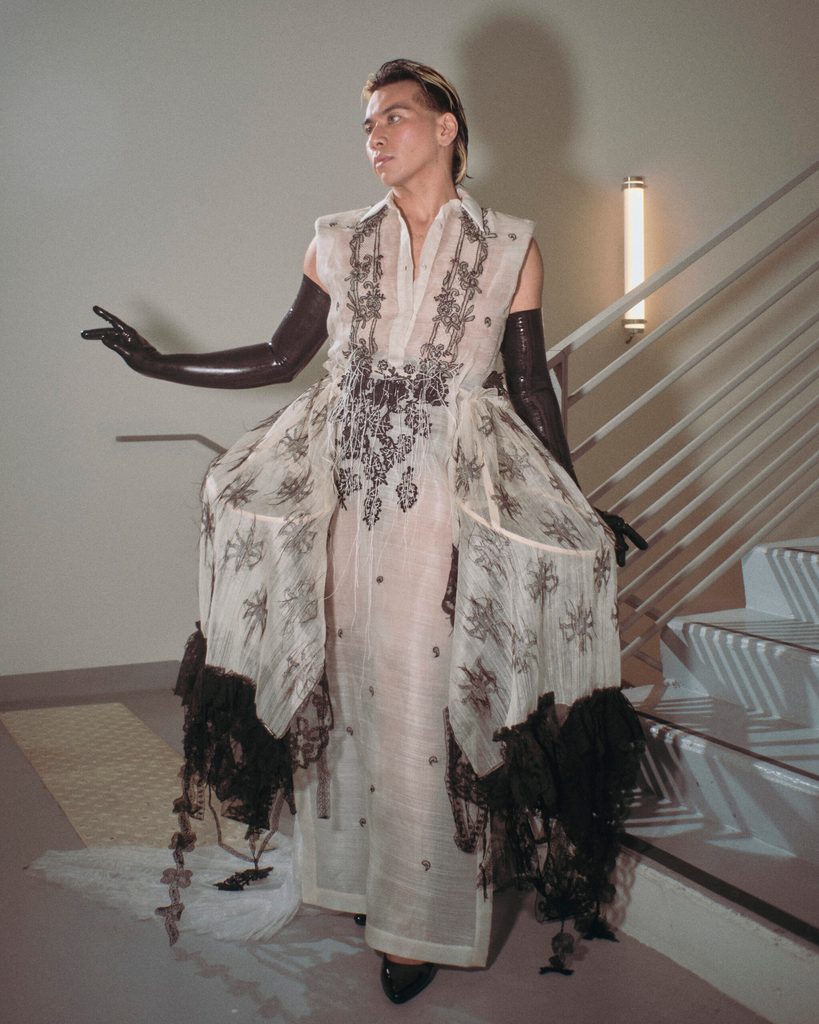
Rappler: The Philippines has its unique challenges when it comes to LGBTQ+ rights and acceptance. From your perspective, what are some critical issues facing the queer community in the Philippines today?
Macasinag: The Philippines has a long way to go in terms of progress for LGBTQ+ rights. On a larger scale, lawmakers must pass the SOGIE Bill which will create legal protection for queer individuals in the country, hopefully diminishing the discrimination that we face daily. This discrimination however must also be solved with a change of mindset, of true acceptance, wherein queer individuals should not be seen as second-class humans nor should be taken advantage of merely for fun. As Filipinos, we must be mindful of the microaggressions that have become the norm when discussing queerness.
Rappler: Fashion often serves as a medium for social commentary. In developing “Haute Queer-ture,” did you find it difficult to make a statement yet still ensure that the collection appeals to a wider audience? How do you see fashion as a tool for queer empowerment and visibility, especially in places that may be less accepting of queer identities?
Macasinag: I accept the truth that with the scope of my work, it is almost difficult to be in line with social commentary without performativity. Fashion itself is a performative field as seen in how we push design or how we create our imagery – I know that my making clothes will not save lives. I do, however, give importance to how fashion is one of the most personal forms of craft, simply because it really is within close proximity to us given that it happens on our bodies.
This understanding of the medium allows me to work my craft onto a level that makes it relevant for everyone who sees it and is then the canvas for how I intend to show newer forms of transgression through clothing. Here, even simply putting queer men and transwomen in ballgowns on a runway can be transgressive.
Rappler: Please tell us a bit about your journey from the Philippines to studying fashion design in France. Does the approach to fashion design and education in France differ from that in the Philippines?
Macasinag: I moved to Paris in 2018 for my higher academic studies and received a scholarship from my dream school the year after. It was a leap of faith, as our resources were limited. I adapted quickly to France’s culture, but the main challenges were in trying to get by as a fashion student, especially since studying fashion in such an economy is incredibly expensive.
In comparison to my studies in the Philippines, France’s fashion education is much more comprehensive and allows you to see into the core of the industry. It’s somewhat similar to an artist residency wherein your situation can inform your work; it’s different to just be here. My expectations from the industry have since then changed, especially in how I produce my work and deal with other creatives. Being fortunate enough to reside in Paris at such a formative part of my life and my career has allowed me to view fashion on a more global scale.
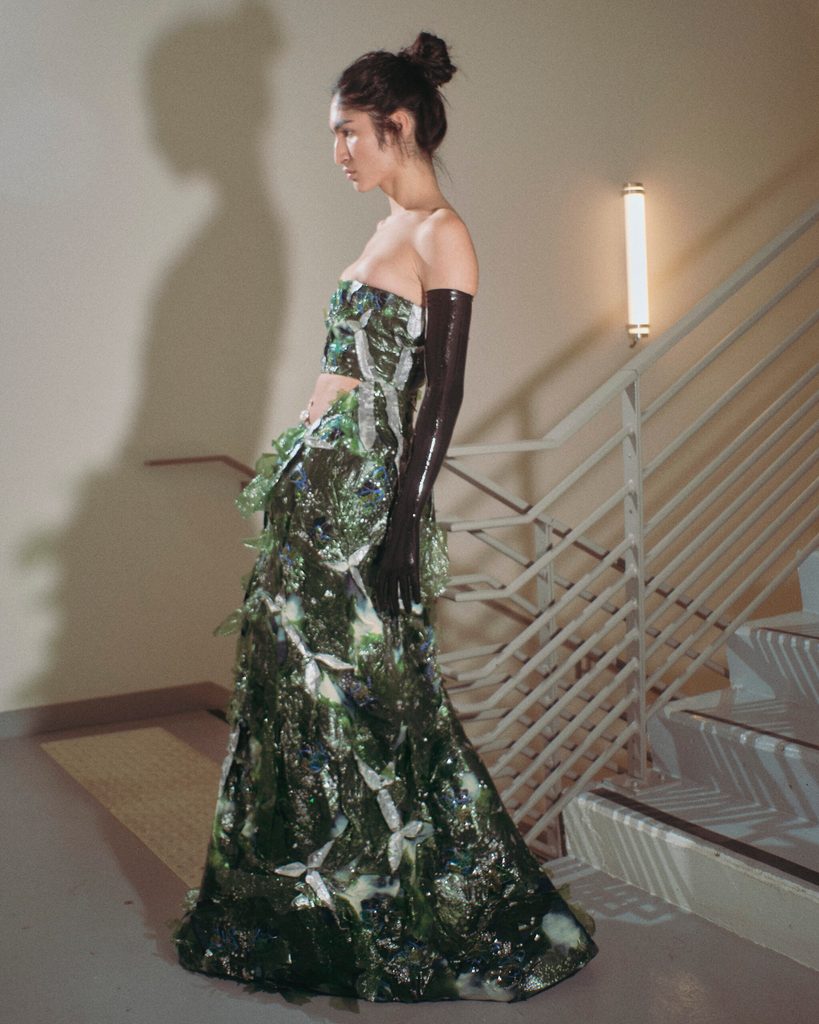
Rappler: How does your Filipino heritage influence your fashion design process and aesthetic, especially in a global fashion capital like France?
Macasinag: I do not forcefully inject my Filipino heritage into my work here, but I do rather often find similarities in value with the topics I take on here and the subjects that I’ve grown to be familiar with in the Philippines. It is not difficult to find parallels between France and the Philippines wherein I would have the chance to talk about artisanship, social problems, and humanity through my work. Furthermore, in my work, I mostly aim to use influences that I have a personal relation to or have a lived experience with- it’s more natural to do so.
Rappler: Now that you’ve finished your Master’s degree, what are your plans for the near future?
Macasinag: I plan on building a better ground for my creative career here first, possibly working in different fashion houses in the next couple of years to gain experience. If I manage to have enough means, I would love to bring my brand from the Philippines and have it based in France. But in the meantime, I just want to focus on being able to grow slowly and steadily in the industry here. – Rappler.com
Add a comment
How does this make you feel?




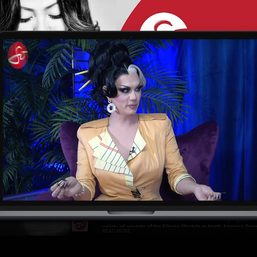





There are no comments yet. Add your comment to start the conversation.